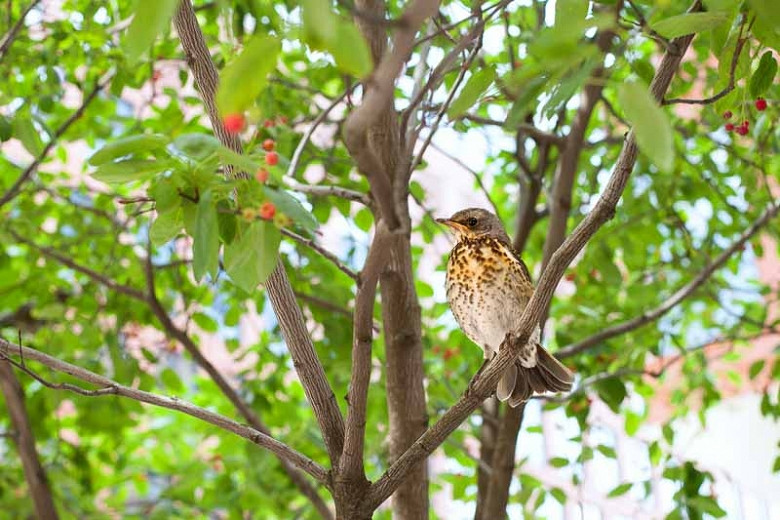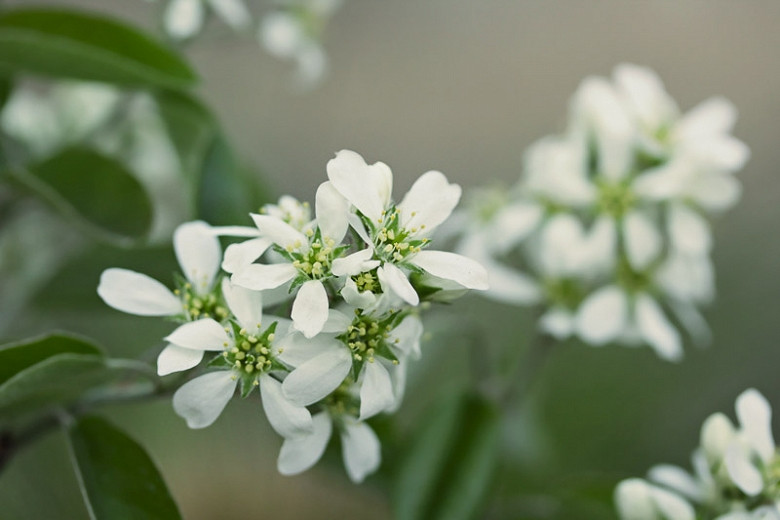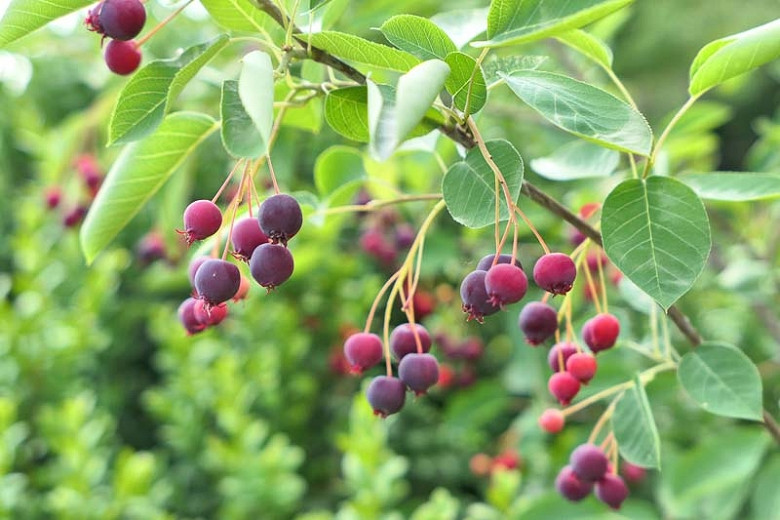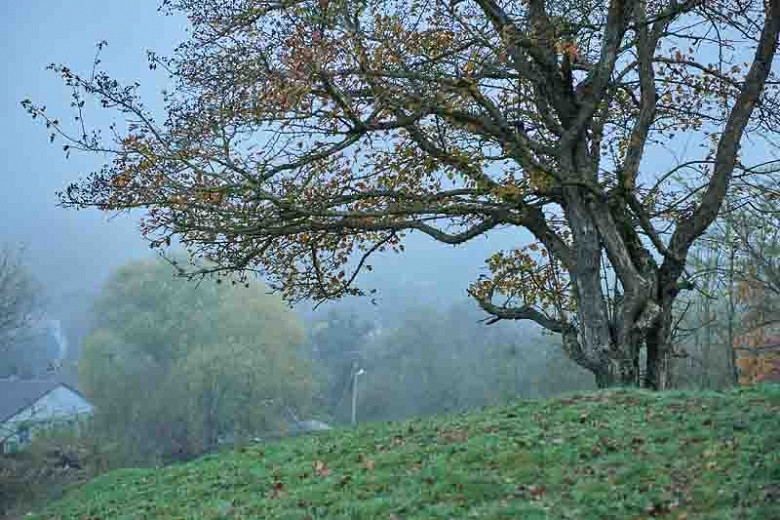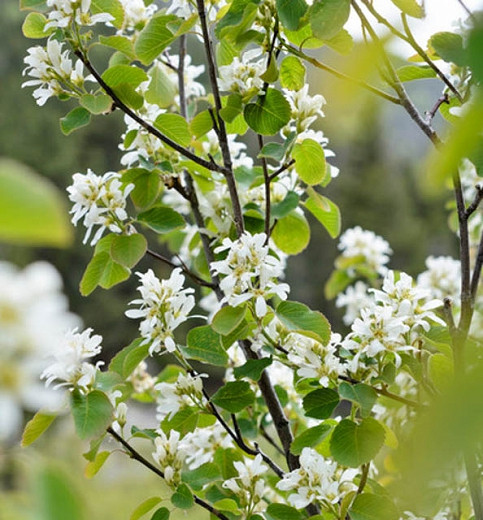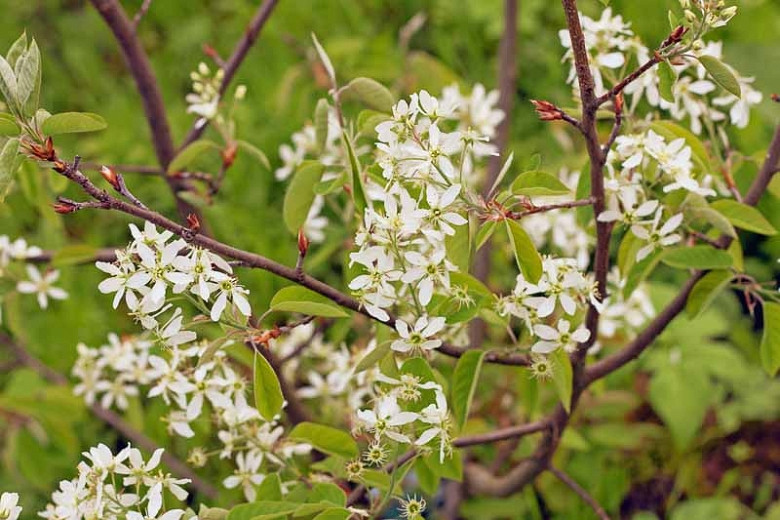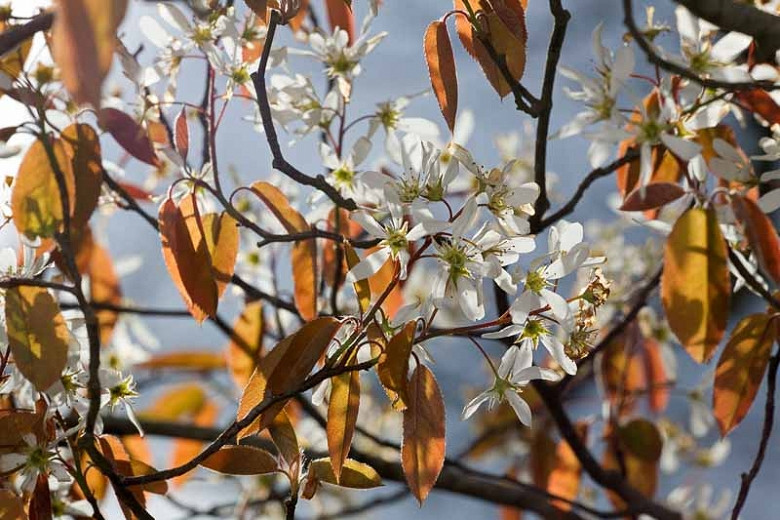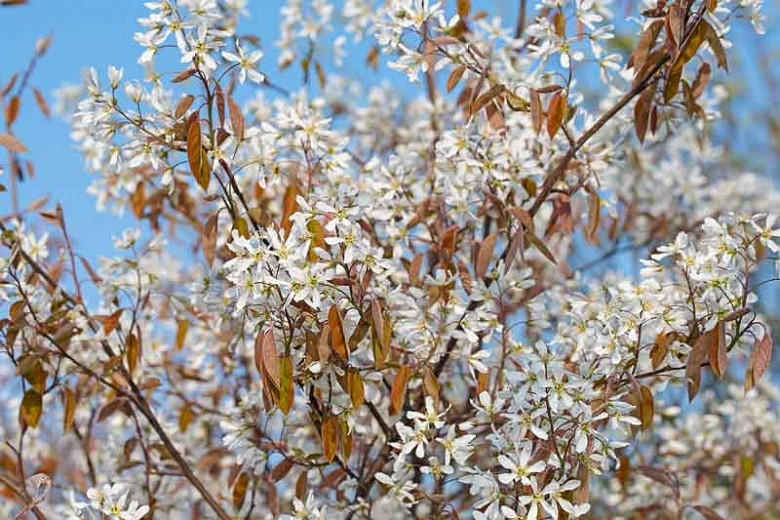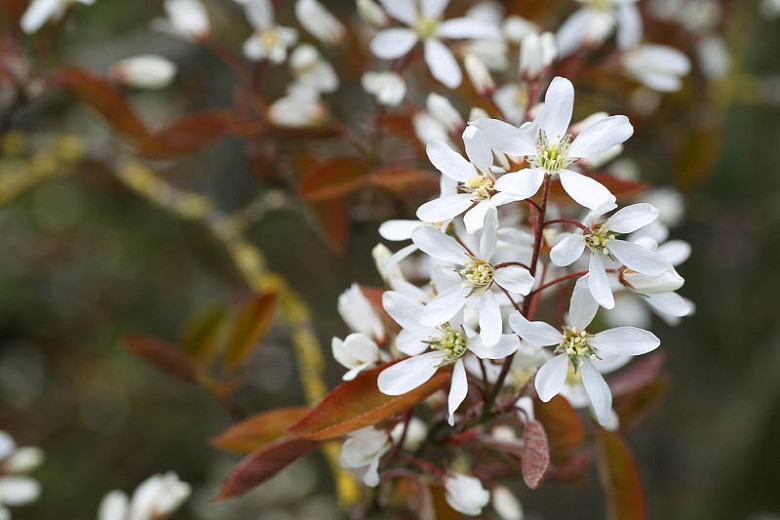Amelanchier alnifolia (Serviceberry)
Domesticated for fruit production, Amelanchier alnifolia (Serviceberry) is a deciduous, upright, suckering shrub with four seasons of interest. In mid-spring, compact clusters of fragrant, white flowers emerge just before the leaves. Attractive to pollinators, they are followed by small, sweet, blue berries in early summer. They make great jellies or jams and are appreciated by both birds and humans. The foliage of small, light-green, sharply and coarsely toothed, oval leaves, turns to brilliant shades of orange and red in the fall. The plant remains attractive even after the leaves drop, thanks to its elegant growth habit and its light gray bark adorned with charcoal-gray striations. Serviceberry is attractive as an ornamental shrub or may be trimmed as a pretty hedge.
- Grows slowly up to 10-15 ft. tall and wide (300-450 cm)
- A full sun to part shade lover, this plant is easily grown in moist, well-drained, acidic soils. Best berry production and fall color occur in full sun. Tolerant to harsh, dry, or alkaline conditions once established. Drought tolerant.
- Low maintenance, this plant is also generally pest and disease free but watch for occasional rust, leaf spot, fire blight, powdery mildew, and canker.
- Mass in mixed shrub borders. Perfect as a specimen plant, hedges, and screens, or for foundation plantings. Makes an excellent windbreak when planted fairly close together, so the branches can intertwine to form a living fence. Can be used for erosion control.
- Can be started from seed or vegetative cuttings.
- Native to western Canada and mountainous parts of western U.S.
Requirements
| Hardiness | 2 – 7 |
|---|---|
| Heat Zones | 3 – 8 |
| Climate Zones | 1, 1A, 1B, 2, 2A, 2B, 3, 3A, 3B, 4, 5, 6 |
| Plant Type | Shrubs |
| Plant Family | Amelanchier – Serviceberries |
| Exposure | Full Sun, Partial Sun |
| Season of Interest | Spring (Mid,Late)Summer (Early,Mid,Late)FallWinter |
| Height | 10' – 15' (3m – 4.5m) |
| Spread | 10' – 15' (3m – 4.5m) |
| Spacing | 120″ – 180″ (300cm – 450cm) |
| Water Needs | Average |
| Maintenance | Low |
| Soil Type | Loam, Sand |
| Soil pH | Acid, Neutral |
| Soil Drainage | Moist but Well-Drained, Well-Drained |
| Characteristics | Fragrant, Showy, Fruit & Berries |
| Native Plants | United States, Alaska, California, Midwest, Iowa, Minnesota, Nebraska, North Dakota, South Dakota, Pacific Northwest, Idaho, Oregon, Washington, Rocky Mountains, Colorado, Montana, Utah, Wyoming, Southwest, Nevada |
| Tolerance | Drought |
| Attracts | Birds, Butterflies |
| Garden Uses | Beds and Borders, Hedges and Screens |
| Garden Styles | City and Courtyard, Informal and Cottage, Prairie and Meadow, Traditional Garden |
